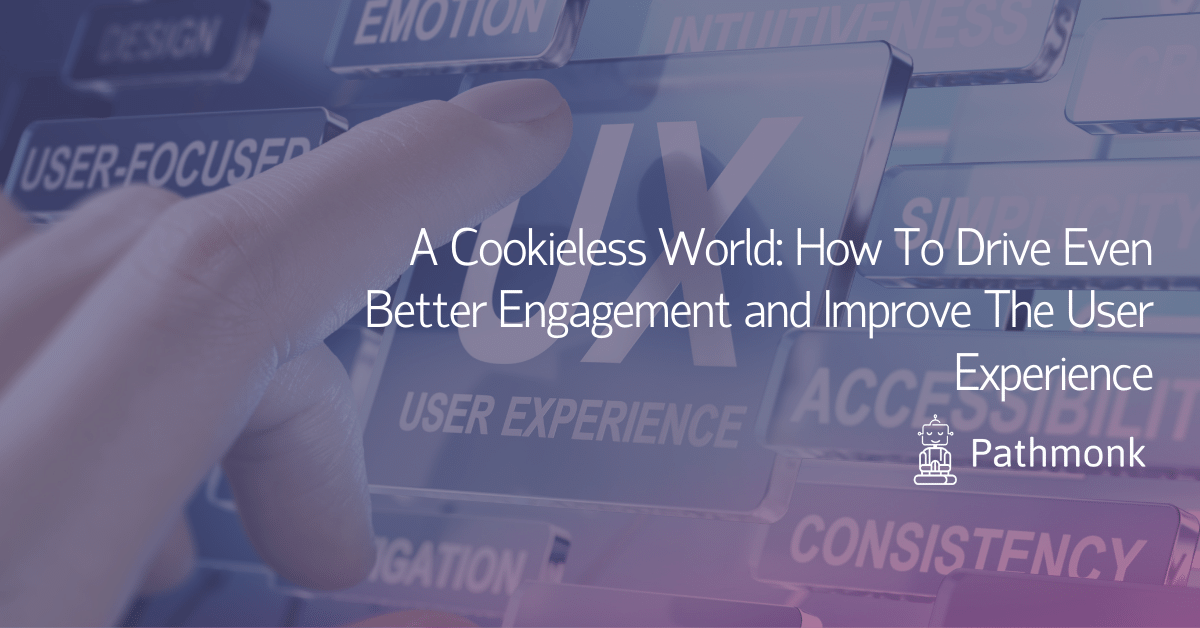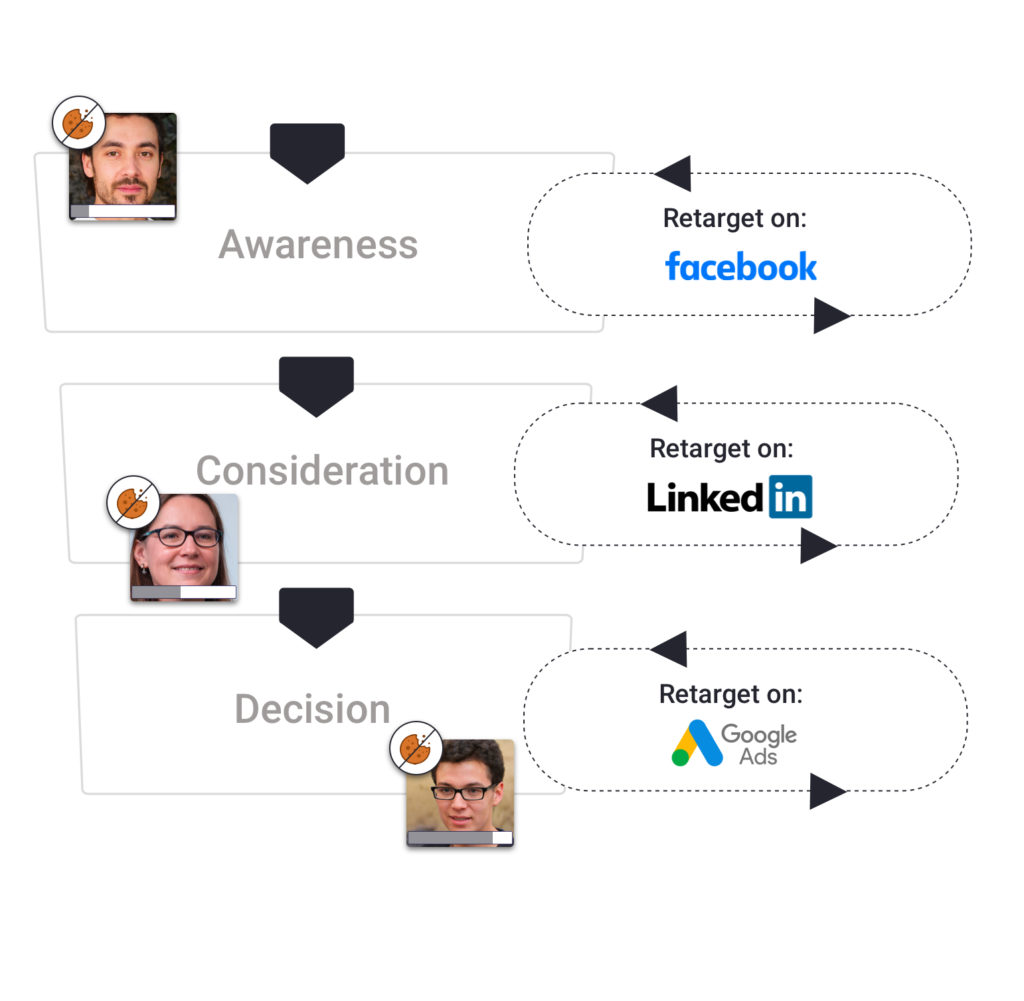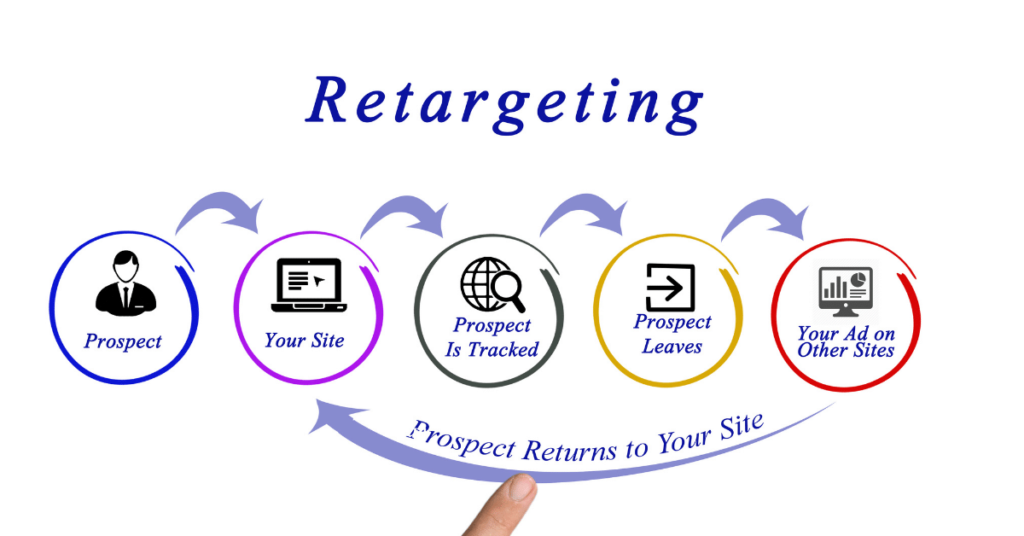A Cookieless World: How To Drive Even Better Engagement and Improve The User Experience


Providing a more relevant, engaged, and appropriately personalized user experience will be essential to building trust and driving growth in a cookieless world. There’s no denying that we have lost a personable touch in our multi-platform digital ecosystem. But with shortened attention spans and the always-available content and channels, marketers and sellers have less access and fewer opportunities to influence a purchasing decision directly. This makes personalization and engagement more challenging.
Many marketers have fought to stay in touch with their digital audience through cookie-based marketing methods. From retargeting ads to data collected through cookies; marketers have used these strategies to analyze, personalize and improve the user experience overall. With 98% of our visitors leaving without converting, marketers have become more like analysts trying to understand and react to always-on consumers in real time.
90% of marketers consider attribution essential or critical to success, combined with about 80% of marketers who are very or moderately reliant on third-party cookies for their digital marketing efforts, leaving marketing and digital advertising professionals concerned for the future success of their efforts in a cookieless world.
The Cookieless World
The cookieless world isn’t entirely cookieless as first-party cookies are here to stay, for now. First-party cookies identify a user between pages, remember selected preferences, or remember and store your shopping cart. With every new page load, your login and cart would be forgotten without these cookies; they set the foundation for the internet and are not going away yet. However, as each browser holds different rules, with different lifespans for this collection of data we must be cautious of how much we rely on first-party cookies.
Advertisers have used third-party cookies as a way to track users across the internet more precisely. These cookies are stored on a consumer’s browser to access details of their internet activity and specific interests. These third-party cookies, suitably named, come from a website other than the one a user is currently on. This data is often collected without the users’ consent and with little control or transparency. With these growing privacy concerns, third-party cookies will be phased out with companies like Apple, Microsoft, and Mozilla having already blocked third-party cookies in their browsers long before Chrome.
Supercharge your ads' ROI without cookies
Boost your ads performance with cookie-free ads that retargets users based on their real-time intent.

The Problem With Cookies
Data Privacy & Consumer Demands
Consumers have started to lose trust in brands they once loved. With about two-thirds of cookies being rejected, it’s clear consumers no longer trust brands that rely on third-party cookies. Previously consumers have had little knowledge of how their data has been used, collected, and shared. But with data breaches, and increased fraud concerns our users are demanding transparency, choice, and control.
There is no denying that the collection of both third-party and first-party cookies is personalizing the buying experience but how far is too far? As consumers see the pop-ups to accept cookies do they really understand what they’re agreeing to? With growing skepticism and concern for just hitting ‘I agree’ our consumers are spending more time reading into how you’re collecting and using their data rather than interacting with your product and website. They have quickly pulled away from their buying journey and have been instantly greeted with doubt and friction. So how much personalization becomes too invasive? Most importantly, how can we provide better user engagement and experiences without breaching our audience’s privacy in a cookieless world?
Retargeting Ads
Third-party cookies have been the lifeline of digital advertising. Advertisers have used third-party cookies as a way to track users across the internet more precisely. These cookies have been critical in informing the type of adverts that are shown to users. Although personalizing the adverts, many advertisers and ad-tech companies have collected this information without explicitly asking for the users’ permission. So as consumers feel traced and chased by adverts following them around browsers, ad blockers have become the new product to purchase rather than your solution. Although intending to keep consumers’ content relevant and personalized, brands are rather seen as invasive and aggressive.
But we have to ask why 83% of marketers anticipate a moderate to a significant impact on their digital advertising efforts. Why are we spending so much money over-targeting individuals and spending less on developing relationships, optimizing user experiences, and building our brand image from the foundation up?

We’re missing the potential to create human connections and expose our brand to new customers. If we focus too much time and money on the individual who viewed our solution or product once, perhaps even by mistake, we miss out on the other prospect who really needs it, and who has challenges we can solve.
Not to mention that third-party cookies are unable, in the vast majority of cases, to bridge the gap between devices and apps, making it hard to track the full customer journey in our multi-platform world; giving third-party cookies less power than we think. As users start to manage and clear their cookies while hopping from one device to another, advertisers are relying on out-of-date and incorrect cookie data.
How AI is Replacing Cookies
There have been extensive discussions, debates, and conclusions about technologies that will serve the cookieless world and replace third-party cookies. From ID-based solutions to first-party and zero-party data strategies to building out a customer data platform, many professionals are concerned about the relevancy, scalability, and measurement capabilities of these alternative strategies.
The key is to have a robust strategy powered by user insights and the right technology that helps you better engage with users and influence their buying journeys, quicker and more effectively. Technology powered by artificial intelligence is a massive step forward in a cookieless world without losing revenue. AI can make use of and process several different kinds of data points to help marketers enter a new digital world without cookies. By identifying trends, and predicting online behavior AI can provide effective ads, influence user experiences, and personalize engagement without collecting identifiable information. Collecting real-time user data anonymously and avoiding privacy issues allows marketers to leverage data more effectively while benefiting from higher conversion rates.
Improving User Engagement & Experience With Artificial Intelligence
Through AI it is possible for marketers to drive user engagement and curate better online experiences. User experience is critical to retaining visitors’ attention and driving conversions, which makes artificial intelligence a powerful tool. Through natural language processing and machine learning, AI can create targeted content, and identify users’ needs and preferences.
Consumers don’t just want personalization, they demand it. With Personalization driving performance and better customer outcomes, solutions powered by AI are exactly what businesses need to meet consumer demands. ‘Companies that grow faster drive 40 percent more of their revenue from personalization than their slower-growing counterparts.’
Enhancing user engagement and experience through personalization and AI relies on content. Through blogs, case studies, videos, etc. you can personalize and humanize your brand through valuable content. Businesses that blog get 67% more leads per month. AI can enable your users to find the right content at the right time.

Pathmonk Results
Serving content and CTAs that appropriately match your user’s buying-journey stage and intent is a guaranteed way to directly influence their path to purchase. Pathmonk Results analyses the website buying journey and influences visitors in real-time to instantly qualify and convert. With the power of artificial intelligence Pathmonk Results predicts intent and ultimately the most likely next step of your prospect. Through interactive micro-experiences you can serve content that matches your prospects’ needs; always adding personalization and value to the overall buying experience.
Ready to Futureproof Your Marketing?
We have to pay attention to the demands of our consumers in order to create a positive economy of online purchasing and researching. With the larger concern of privacy issues within different industries, we have to adapt in order to survive. By collaborating with consumers in a more personal, human way and offering them greater control, transparency, and respect for privacy we can start to future-proof our marketing efforts. Change is coming and although we can’t control the decisions of our browsers, we can control and change the way we market, target, personalize, and grow. By making the customer part of the dialogue and leveraging artificial intelligence to create one-to-one personalization we’ll be able to adapt to the cookieless world.
One more thing… Pathmonk Retargeting
You won’t have to give up your targeted ad campaigns either. Using the power of AI, Pathmonk Retargeting is an entirely cookieless solution. Boost your ROI with a retargeting strategy based on buying journey stages and user personas. Processing different kinds of data, and collecting real-time user data such as search history, custom preferences, etc. allows our technology to analyze users’ behavior, find patterns, and personalize ad recommendations to target users with real buying intent.
With a one-click installation, you have the power of buying-journey-stage retargeting that is entirely cookieless and based on intent-data profiles; meaning less ad spend for you and more conversions.
Supercharge your ads' ROI without cookies
Boost your ads performance with cookie-free ads that retargets users based on their real-time intent.






